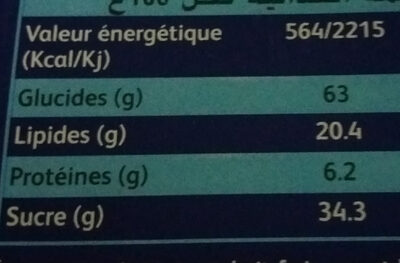Chocup Milky - Excelo - 4
This product page is not complete. You can help to complete it by editing it and adding more data from the photos we have, or by taking more photos using the app for Android or iPhone/iPad. Thank you!
×
Barcode: 16111259340883
Quantity: 4
Packaging: fr:À conserver dans un endroit frais
Brands: Excelo
Countries where sold: Morocco
Matching with your preferences
Environment
Packaging
Transportation
Report a problem
Data sources
Product added on by openfoodfacts-contributors
Last edit of product page on by natalax.
If the data is incomplete or incorrect, you can complete or correct it by editing this page.








